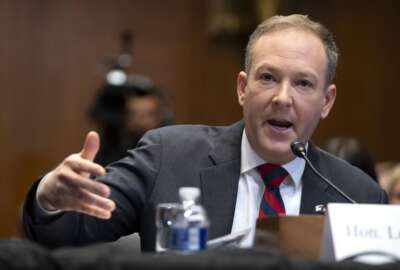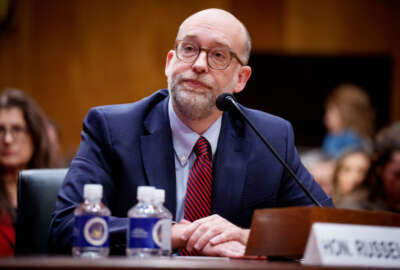Agencies on GAO’s High Risk List find the bright side
The Government Accountability Office\'s biennial High Risk List may spell bad news for an agency, but it can also a road map for making changes.
Agencies who pop up on the Government Accountability Office’s biennial High Risk List have an opportunity and should use it to their advantage. That was the message at an event organized by the National Academy of Public Administration and sponsored by Management Concepts Tuesday.
Agencies often react defensively when they find out they’ve made the list, according to keynote speaker and former NASA Administrator Sean O’Keefe. He said agencies should instead view it as an opportunity to convene a serious planning discussion.
Panel moderator and University of Maryland professor of public policy Don Kettl encouraged a glass-more-than-half-full approach. He pointed out that about two dozen agencies have been successfully removed from the list since GAO began publishing the report in 1990. He called it “a Hotel California where there is, in fact, a place to check out.”
“Nothing that’s ever come off has ever come off because there is zero risk. … It’s, ‘Is that risk being effectively managed?'” said Chris Mihm, managing director of strategic issues for GAO.
Changes to the list
Mihm said the criteria for getting on and off of the list is much clearer this year. “The first big thing that we did was make sure that we were being more transparent in what the criteria are and then where each of the agencies or functions and programs are against that criterion.”
One of the new features is a star-shaped graphic that indicates degrees of progress in meeting five criteria for removing an area from the High Risk List. The five criteria are: leadership commitment, agency capacity, an action plan, monitoring efforts and demonstrated progress. Agencies are graded on each point in terms of: met, partially met or not met.
GAO also added two new areas to the list: “IT Acquisitions and Operations” and “Veterans Affairs Health Care.”
Over the last 10 years, Mihm said GAO has expanded the list to include items in need of fundamental transformation. “In many cases the basic performance and ability of federal agencies to deliver is not going to be just compromised by waste, fraud and abuse in the traditional sense, but just not operating effectively,” he said.
High Risk List as a tool
“The list is a residual of other GAO work that’s being done,” Mihm said. “There are reports that stand behind those and findings and recommendations that are actionable.”
The Census Bureau has successfully been removed from the list twice. Deputy Director Nancy Potok said the bureau has changed its entire approach. “We put in more fundamental pillars to manage what could be very high risk. We put in a very extensive government structure that is tiered but really involves the top leadership — most of all our business lines.”
Census implemented a complete portfolio management system. Every employee has to enter their hours into one project management system so the agency can manage the entire portfolio by project and track the use of all resources. Census looks at things through program lifecycles to identify all of the programs and projects through specific milestones. Risk management happens at the enterprise level. The tiered system lets them elevate the greatest risks.
The High Risk List has helped Census embrace oversight, said Potok. She said, being on the list gives you a point of conversation with congressional oversight to argue against funding cuts.
Chief Human Capital Officer for the Department of Health and Human Services John Gill said it all starts with quality data. “It’s important that we ground ourselves with good information so we know where we’re going,” he said.
HHS plans to launch a program that will give employees the opportunity to rotate into other positions at the agency, Gill said. It will be based on a successful 2013 pilot program at the Environmental Protection Agency that has now been implemented agencywide.
“This is about us taking advantage of already proven opportunities and approached for changing our skills sets in the government and really closing that skills gap,” Gill said. HHS will also launch a program that involves crowdsourcing ideas from universities in order to engage millennials.
Former Defense Comptroller Robert Hale, now with Booz Allen Hamilton, said DoD is constantly addressing risks that are not on GAO’s list such as sexual assault. He pointed to progress in the areas of health care cost, pay and allowances for military personnel and eliminating low priority weapon systems.
“The goal isn’t to get off the High Risk List; the goal is to see if we can cut spending and still provide the support the department needs and the warfighter needs,” Hale said.
“If GAO wants the list to be more useful, at least for the Department of Defense, I think a bite-sized High Risk List would be helpful,” Hale said. “By that I mean identifying specific subsets and grading them so that there is more of a chance to show progress.”
RELATED STORIES:
GAO adds IT acquisition, VA health care to High Risk List
Census Bureau offers primer on enterprise risk management
Copyright © 2025 Federal News Network. All rights reserved. This website is not intended for users located within the European Economic Area.
Lauren Larson is Federal Drive producer and broadcast operations manager at Federal News Network. Follow @llarsonWFED
Follow @llarsonWFED






